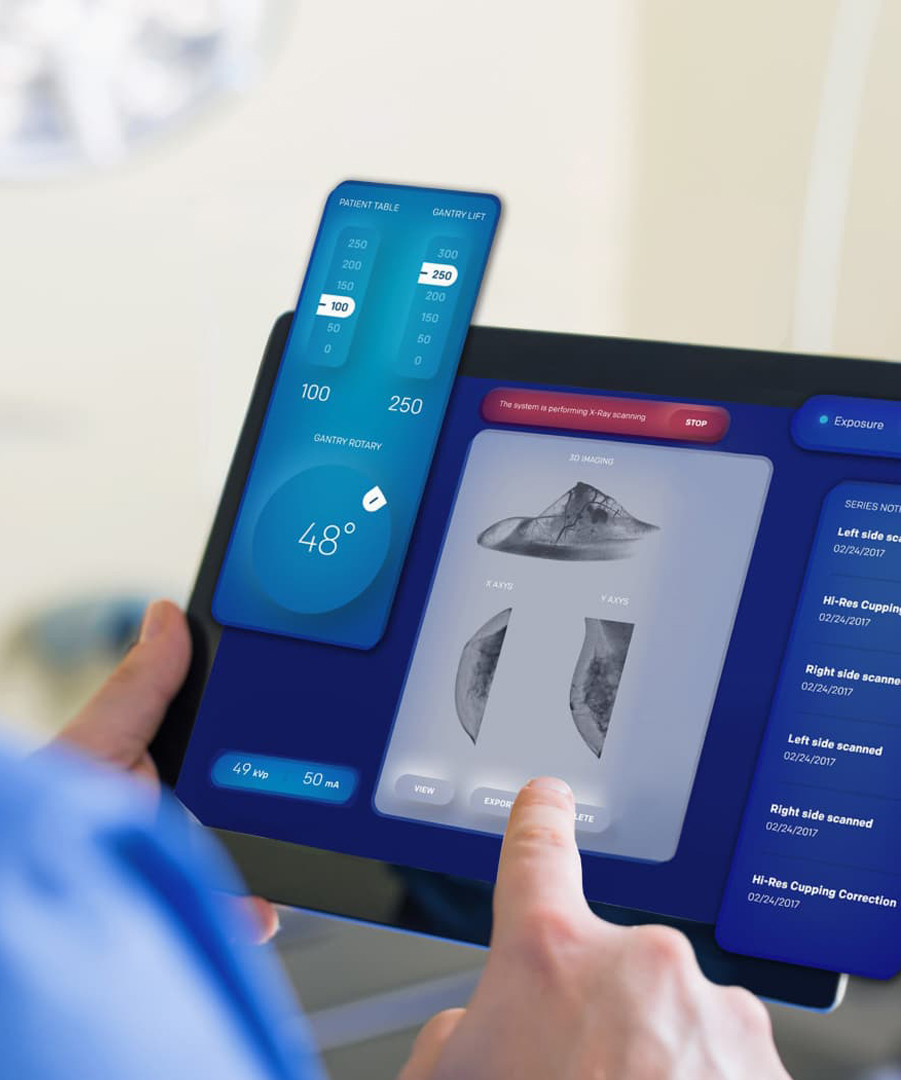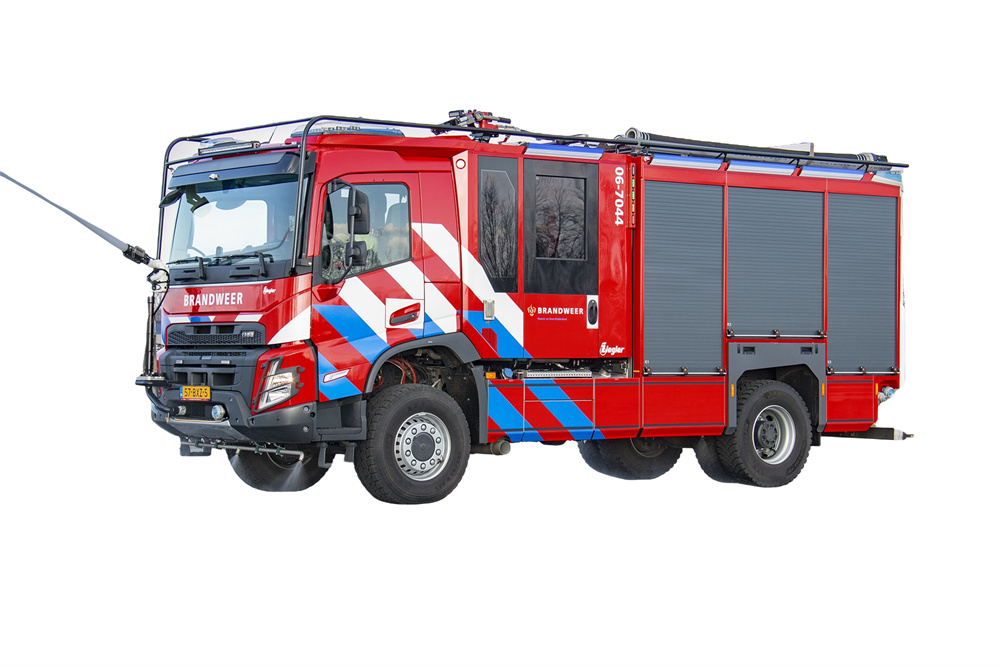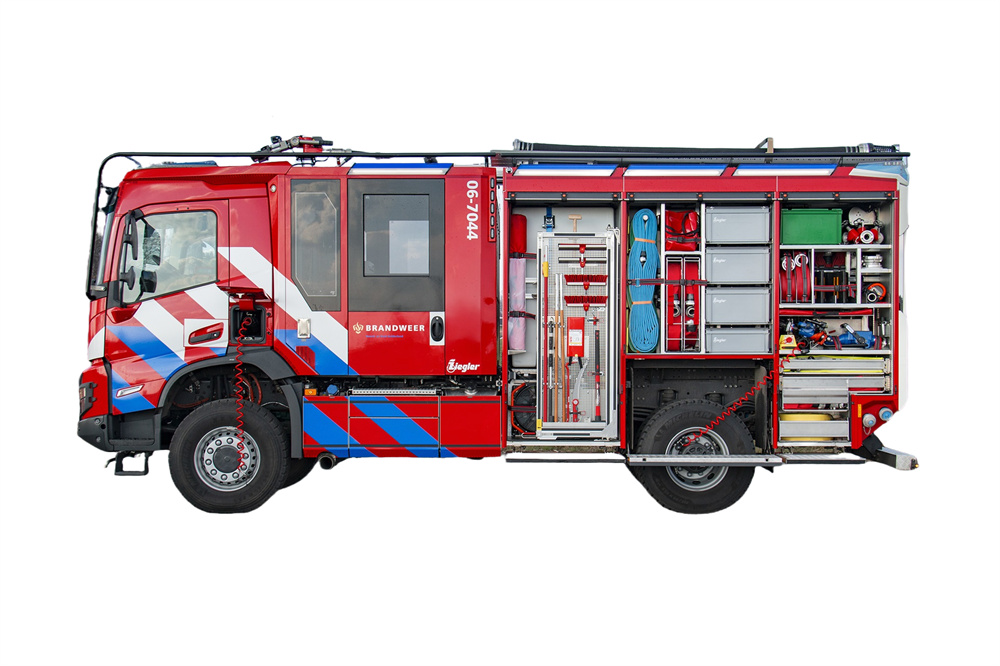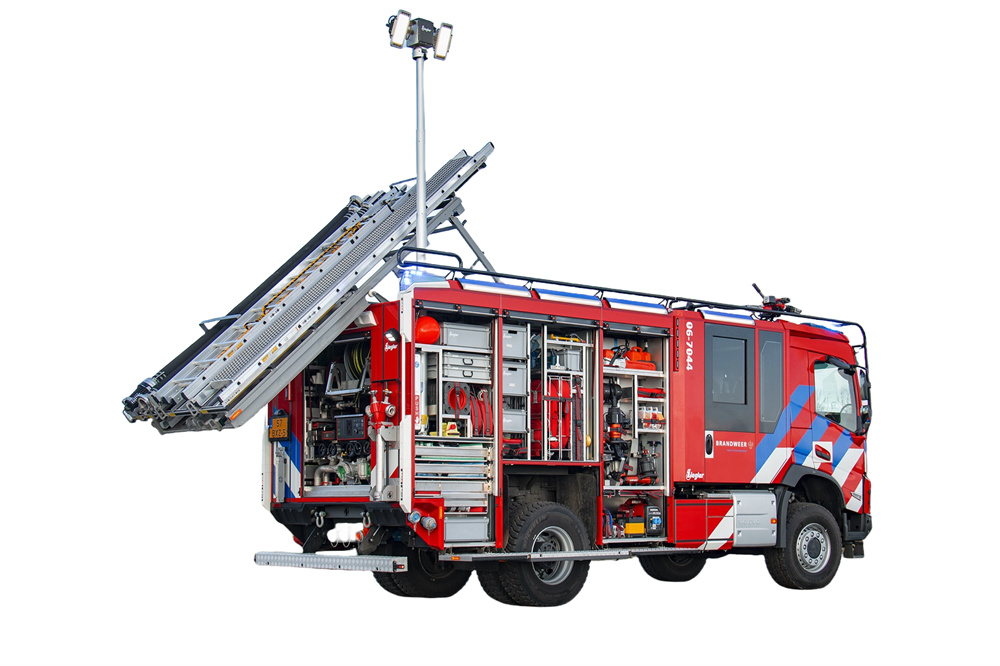


Forest fire truck is a specialized vehicle designed to combat wildfires in challenging terrains. Forest fire truck core configuration integrates robust fire suppression systems, all-terrain mobility, and enhanced safety features. The forest fire truck chassis is typically a heavy-duty 4x4 or 6x6 platform with reinforced suspension, high ground clearance, and off-road tires to navigate uneven landscapes. A high-capacity pumping system, delivering 1,500–3,000 liters per minute, is powered by a dedicated diesel engine, ensuring uninterrupted water flow even if the primary vehicle engine fails.

The water tank, with a 2,000–4,000-liter capacity, is complemented by foam injection systems or chemical retardant tanks to suppress flames effectively. An extendable turret-mounted monitor allows remote-controlled directional spraying, while auxiliary hoses and portable pumps enable ground crews to target localized fires.
The chassis features a 4x4 or 6x6 all-terrain drive system with reinforced suspension and run-flat tires resistant to extreme heat. An armored undercarriage protects against ground embers and debris. The cab integrates heat-resistant glass (up to 1,200°C) and positive pressure ventilation to shield operators.
Operational equipment includes a roof-mounted monitor nozzle with 360-degree rotation and 50-meter reach, complemented by front-mounted bulldozer blades for creating firebreaks. Integrated tool racks carry chainsaws, McLeod tools, and portable drip torches. Advanced units employ thermal imaging cameras and GPS-linked mapping systems for real-time fire tracking.

Forest Fire Truck Usage: A Four-Dimensional Analysis
1. Rapid Response and Fire Suppression
Forest fire trucks are designed for swift deployment to contain wildfires. Equipped with high-capacity water tanks, pressurized pumps, and spray nozzles, they directly douse flames or create firebreaks. Some models deploy fire retardants or foam to suppress combustion in hard-to-reach areas.
2. Terrain Adaptability and Mobility
These vehicles prioritize off-road capabilities to navigate rugged, uneven forest landscapes. All-terrain tires, reinforced suspensions, and 4x4 drivetrains enable access to remote zones. Articulated chassis or tracked systems enhance stability on slopes or debris-covered paths.
3. Resource Transport and Logistics Support
Beyond firefighting, these trucks serve as logistical hubs. They transport personnel, tools (e.g., chainsaws, shovels), and medical supplies to isolated teams. Extended water tanks or refill systems sustain prolonged operations, while auxiliary compartments store emergency gear.
4. Technological Integration and Prevention
Modern units incorporate advanced tech for proactive fire management. Thermal imaging cameras detect hidden hotspots, while drones or sensors map fire behavior in real time. Some trucks feature AI-driven systems to optimize water usage or predict fire paths.

You may be interested in the following information